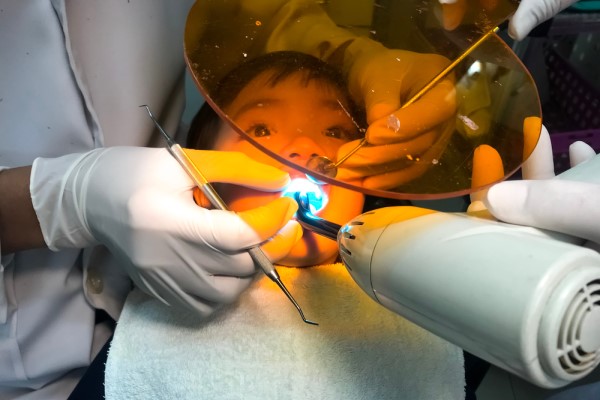How Long is the Dental Sealant Procedure?

Brushing, flossing, using fluoride, and eating a healthy diet are all proven methods of fighting cavities. However, sometimes a dental sealant is needed to help prevent plaque from forming in the uneven pits and fissures that exist on teeth, particularly molars that are naturally rough and uneven. Sealants are a thin coating made of plastic or other protective material that covers the back teeth's chewing surfaces. A dental sealant serves as a sort of raincoat that protects the teeth from acidic bacteria that can cause cavities.
How are dental sealants applied?
The process of applying sealants is fast and painless, requiring only a few minutes of time with the dentist or dental hygienist. While the procedure may vary depending on the manufacturer and type of sealant, the basic procedures for the application of resin sealants are as follows.
Gathering the needed materials
The dentist or hygienist will assemble a tray with needed equipment, instruments, and supplies, which may include articulating paper, cotton rolls, a curing light, an explorer device, a mirror, pliers, a saliva ejector, a syringe, and a toothbrush.
Cleaning and examining the tooth
Prior to applying the dental sealant, the tooth must be cleaned thoroughly. This may be completed with hydrogen peroxide, a toothbrush, or a jet. The surface of the teeth is rinsed carefully and examined to ensure all debris has been removed. The tooth must be free of existing decay prior to the application of the sealant; if decay is present on the tooth, the decision to use sealant should be reconsidered.
Isolating the surface of the tooth
For the proper placement and adherence of sealants, the tooth's surface must be free of existing saliva or debris. Dental sealant retention problems are usually the result of moisture or contamination from saliva. A rubber dam, cotton rolls, or dry field pads or kits may be used to prevent moisture from interfering with the application process.
Etching the tooth
Conditioning the tooth, also known as etching, is completed with the use of phosphoric acid, which kills bacteria and roughens the surface of the tooth to make it easier for the dental sealant to adhere when it is applied. This quick and painless process takes no more than 30 seconds to complete.
Rinsing and drying the tooth
The tooth's surface must be thoroughly rinsed with water to remove all traces of acid left from the etching process. Air and suction is used to completely dry the tooth.
Applying and curing the primer and sealer
The sealant material may be placed directly on the tooth or on top of an optional primer to help with the adhesion. Some types of sealants must be mixed prior to applying. The sealant must sit for 10 to 20 seconds prior to curing. The curing process takes approximately 30 seconds with concentrated visible light, which is needed for the dental sealant material to set.
Conclusion
The process of applying dental sealant is simple and pain free. The dentist or hygienist only needs a few minutes to complete the application process for each tooth, and the resulting level of protection against cavities is well worth the time and effort.
If you are interested in learning more about the process or benefits of dental sealants, please contact our office today.
Check out what others are saying about our dental services on Yelp: Dental Sealants in Philadelphia, PA.
Recent Posts
A dental sealant is a covering that goes on the teeth to protect against decay. The foods and drinks that you consume every day are what can do the greatest harm to your teeth. Without protection with dental sealant, sugars, acids, and other things can erode, degrade, and damage the teeth. Learn about dental sealants…
Proper hygiene techniques and regular dental checkups are a great defense against tooth decay, but what if they are not quite enough? Enter dental sealants. Getting tooth sealants can also greatly assist in the tooth decay battle. Continue reading for more insight into this treatment option and how it can be an effective tool for…
Dental sealants can protect your child’s oral health. Bacteria in the mouth are always present. That is why protecting your child’s teeth is important. Dental protection has to happen at an early age. If you want to know more about dental sealants for children, here are some common questions and their answers.This is a thin…
One of the best ways to protect molars and premolars from tooth decay is through dental sealant treatment. However, many who could benefit from treatment are unfamiliar with how it works and whether it is safe. This review highlights frequently asked questions about dental sealants and their answers. Many dentists encourage patients to ask questions about…


